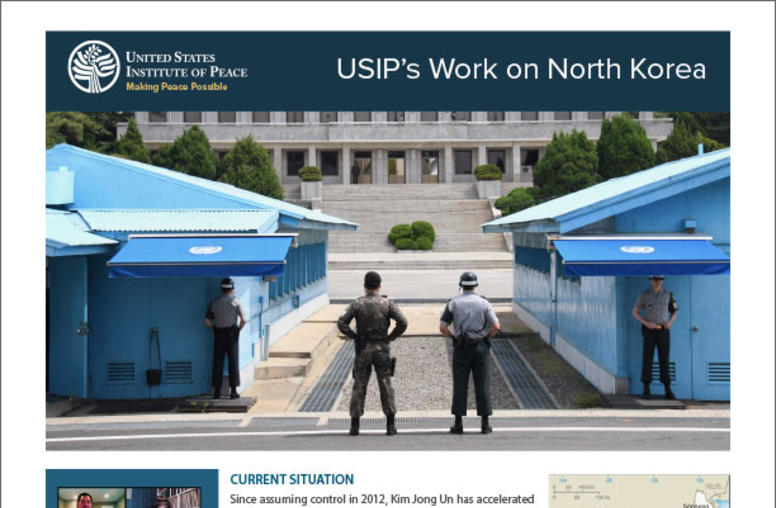United States, North Korea Stuck in Dangerous Zero-Sum Game
But Options Exist to Avoid Military Confrontation
North Korea’s successful test of a new intercontinental missile capable of reaching the U.S. mainland has escalated an already dangerous standoff. After the Hwasong-15 missile soared 2,800 miles high and then crashed in waters off Japan, U.S. Secretary of Defense James Mattis said North Korean leader Kim Jong Un now has the ability to hit "everywhere in the world, basically."

In response, President Donald Trump is promising major new sanctions on North Korea and says he’s spoken with Chinese leader Xi Jinping about the missile test.
Crisis at All-Time High
This period represents the most dangerous crisis in U.S.-North Korea relations since the early 1990s, when President Bill Clinton contemplated bombing North Korea’s nuclear facility at Yongbyon.
The problem is the crisis is stuck in a zero-sum game: North Korea is determined to attain a reliable long-range nuclear capability and the United States is determined to prevent it. With these maximalist goals in direct opposition to each other, neither side has any room for compromise.
Some in the United States sense that almost all diplomatic, financial, and other responses have been exhausted, and that only extreme measures remain to bring North Korea to the negotiating table. These could include limited military strikes, robust secondary sanctions against China or a comprehensive embargo against North Korea.
Meanwhile, Kim Jong-un has seen what happened to other governments—such as Libya, Iraq, and Ukraine—that relinquished their weapons of mass destruction programs. The North Korean regime believes its nuclear weapons program is the ultimate guarantor of its safety. Because of this, the American intelligence community believes that no amount of pressure will cause North Korea to denuclearize.
Options to Prevent Conflict
Still, strategies short of military conflict could be used to deescalate the impasse.
The effort to put pressure on China, for example, seems to be working. China has been more amenable to passing tougher U.N. Security Council resolutions, which have effectively banned 90 percent of North Korea’s exports. And it has taken stronger steps to enforce these resolutions, including ceasing joint ventures with North Korean entities, prohibiting the import of North Korea seafood, banning the use of North Korean labor, and discontinuing Air China flights to Pyongyang.
This pressure may not directly change the North Korean regime’s behavior, but it could cause internal unrest, which could influence the regime’s thinking.
But China is worried that too much pressure could cause war or instability on the Korean Peninsula. Beijing is concerned that if pressure causes the North Korean government to collapse, a Pandora’s box of security threats will be unleashed, including refugees flooding across the borders, loose nuclear materials, and perhaps even U.S. forces sent closer to their borders.
A second step to consider is a reassessment of the singular focus on denuclearization. If the two sides can instead start to think in terms of achievable, intermediate confidence-building measures, in which each side concedes something of value to the other, then there may be hope for reducing tensions and tackling more difficult goals later on. But it will be difficult to take intermediate steps from maximalist positions.
A third approach to reduce tensions is China’s proposal of a dual freeze: a suspension in North Korea’s nuclear and missile tests in exchange for a suspension of joint military exercises by the United States and South Korea. So far, neither the United States nor North Korea seem interested in this plan. Washington doesn’t want to degrade its military readiness and views the trade as unfair because nuclear and missile tests are prohibited by international law while alliance exercises are routine and defensive. Pyongyang, on the other hand, seems hell-bent on conducting tests fast enough to achieve its long-range nuclear capability as soon as possible. China’s proposal is not a perfect solution, and maybe not even a good one, but it represents one example of the type of unconventional thinking we should exhaust before proceeding with more extreme measures.
As long as both sides are unwilling to give some ground from their maximalist positions, the stalemate will continue indefinitely. But with tensions at an all-time high, major provocations such as this week’s missile test make the possibility of a direct military confrontation more likely.
On Friday, December 1, Public Radio International hosted "Is Diplomacy Possible with North Korea?" a public town hall with Frank Aum at USIP.



